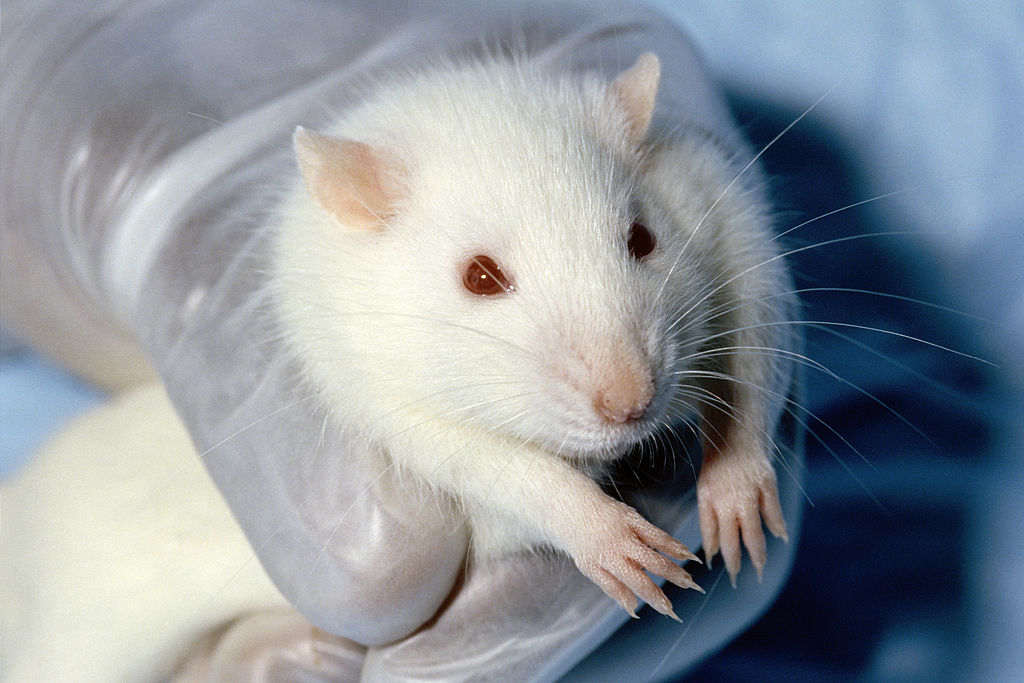 College courses on substance use and addiction will invariably include information about the intense addictive nature of certain drugs. We learn about how lab rats, when given the choice between food and cocaine, will sometimes starve to death. We hear about how a single use of cocaine can hijack the survival mechanisms of some animals. We’ve seen rats in steel cages with wires and probes or receiving painful shocks from electric grids. We learn all about the straightforward ideas of reward and punishment that fit so nicely with our traditional views of addiction.
College courses on substance use and addiction will invariably include information about the intense addictive nature of certain drugs. We learn about how lab rats, when given the choice between food and cocaine, will sometimes starve to death. We hear about how a single use of cocaine can hijack the survival mechanisms of some animals. We’ve seen rats in steel cages with wires and probes or receiving painful shocks from electric grids. We learn all about the straightforward ideas of reward and punishment that fit so nicely with our traditional views of addiction.
The lesson of course, is that drugs are inherently addictive. We learn that using an addictive substance even once can spell disaster. And we’ve probably all seen examples of that effect. I’ve heard many accounts of people using opioid or stimulant substances and almost immediately developing an addictive response. Again, the lesson is pretty simple, “drugs are bad, mkay?”
But what about the people who use drugs but never seem to develop the addictive response? What about the people who use highly addictive substances and don’t like the overall effect? I’ve heard a number of people report some enjoyment from methamphetamine but rate the overall experience as negative. How can that occur when using one the most highly addictive substances available?
We know that addiction is a highly complex problem with a multitude of contributing factors. In spite of that view, many hold to the paradigm that drugs are the problem. Research on genetics and environmental influence show a variety of factors contribute to the questions about who will and will not become addicted. Yet we still cling to the basic belief that drugs are the problem.
 Which brings us to the Rat Park experiment. In the late 1970’s (yes, over 30 years ago), a Canadian psychologist and his colleagues hypothesized that environment and stress play a larger role in addiction than the addictive properties of drugs.
Which brings us to the Rat Park experiment. In the late 1970’s (yes, over 30 years ago), a Canadian psychologist and his colleagues hypothesized that environment and stress play a larger role in addiction than the addictive properties of drugs.
The experimenters placed a number of rats in isolated and cramped cages while others enjoyed the wide open space of a larger enclosure called rat park. The rat park rats had nesting material, room to roam, and other rats of both sexes to interact with. Both sets of rats were provided the option of drinking either water or a sweetened liquid morphine.
As expected, the rats in the cages enjoyed and consumed large amounts of the liquid morphine, supporting the belief about the inherent additive nature of the substance. But the rats in park didn’t support that belief. They were resistant to self-administration of morphine. The researchers even forced some rats to become addicted by administering morphine for 57 consecutive days. When those dependent rats were placed in the rat park, many still resisted self-administration of the drug. There’s a great comic rendition of the research at Stuart McMillen’s blog.
In short, when the rats were stressed and isolated, they behaved as expected and quickly developed addictive patterns of use. These types of experiments have been conducted using many different addictive substances and brain stimulation with similar results. So why weren’t the rats in the park as prone to addiction as those in the cages? Did a healthy environment, reduction in stress, and adequate social activity really make that much of a difference? It would seem so.
What are the implications for treating substance use disorders? And why haven’t more of us heard about this experiment? Am I really the only addiction professional who never learned about this experiment in college or training? I’ve recently read about similar experiments on groups of monkeys showing social position having a similar effect.
I wonder if we (in treatment) are spending too much time focusing on the addictive nature of drugs and not enough on improving quality of life? I think it’s helpful for those addicted to substances to understand what’s going on inside their body and brain. It just doesn’t seem like that’s going to correct the problem.
I believe the larger implications are for how our society responds to addiction. Our law enforcement and criminal justice system attempts to impose a tremendous amount of control and certainly increases stress and isolation for those found violating our drug laws. Are these practices likely to solve the problem? It certainly doesn’t seem so. According to this particular experiment, one could argue we are increasing the likelihood of addiction in those we are trying to help.
As always, I’d love to hear feedback from others or additional resources that may shed light on some of the questions posed.



9 thoughts on “Despite All My Rage: Addiction Research You Probably Don’t Know About”
Interview – Dr. Gabor Mate – Close Encounters with Addiction-
4:00 minutes into this interview Dr Mate starts talking about how our brains develop via interaction with the environment. The issues and concerns identified here parallel the focus pointed out in the “Rat-Park” experiment. Daniel, your site and posts are thought provoking, educational, and very appreciated by this reader. Thanks for being there. ~ed bellows
Thanks Ed, Dr. Mate has become one of my new favorite authors and is actually where I first read about the Rat Park experiment. I appreciate the kind remarks about the site.
Daniel, thanks for shining light on this important work. While each addict has their own “story”, I strongly believe research like this shows ‘addiction’ is more than a drug-to-drug inside the ‘addicts’ body. While there are definite physiological impacts from taking any drug, I think the mind of the addict (or depressed) can be ‘positively’ modified by simply injecting the element of hope and the prospect that life will get better (like a rat in a park). Thanks! Rex
Thank you Rex. I’m actually surprised I’ve gotten resistance from some professionals when confronted with this research. I think some are uncomfortable with the concept of anything beyond straightforward chemical in the brain models of addiction. I think the greater implication is that addiction is as much of a social disease as it is a personal problem. Some seem to struggle with that but I think any of us who have fought our own battles understand it very well.
I am one who has been involved in the recovery process both personally and professionally for a number of years. I’ve felt for some time that understanding mental health is a key factor in the overall treatment of substance use disorder. Improvements in Quality of life and how that effects ones mental health may help in identifying core issues. I’d like more information as to how this study has been applied in treatment plans.
Alvin, reading between your lines, I sense that we might have similar life stories; and I agree with your premise… Would love to talk with you one of these days…
I will continue to look for examples of application of this study. I was contacted by a Phd yesterday who wrote a paper about the research and her work in a residential setting. As soon as I review it I’ll post a link here.
Great article. From first-hand experience, I know that environment plays a huge role in addiction and recovery. After 18 years of opiate addiction and numerous treatment attempts of all types, it took me moving to a nother state where I knew no one and lived in a completely different kind of environment. I have now been clean for 23 years, and I am working on my 2nd Master’s degree. I am glad I found your site – I will refer to it often while writing papers for school, I am sure.
Comments are closed.